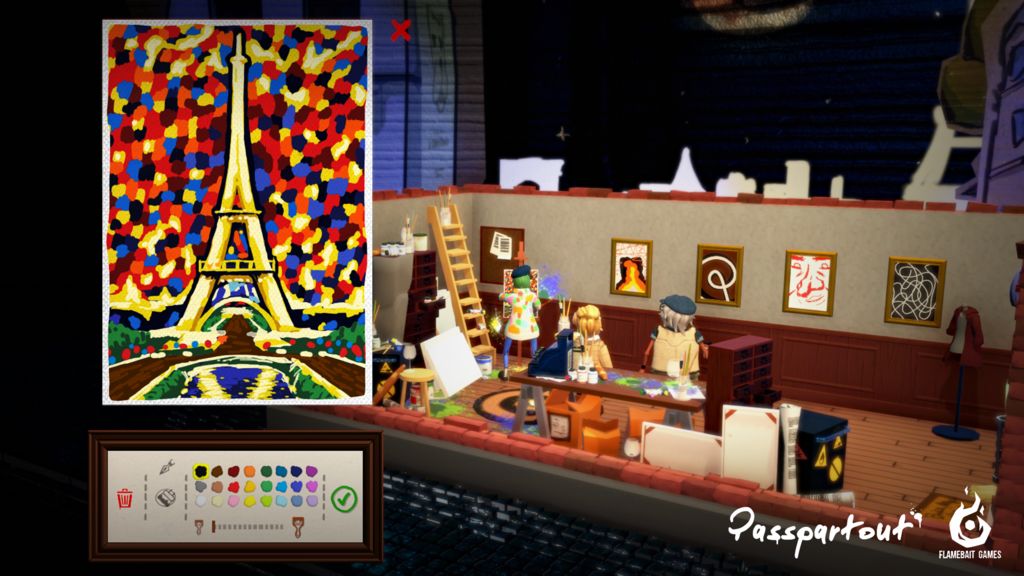Making art to fund your obsession with wine and baguettes, Passpartout: Starving Artist forces you to churn out art as quick as possible to appease the droves of art snobs that grace your garage shop front with their presence.
In Passpartout: Starving Artist you draw in a similar style to MS Paint to create all the art you can imagine. With a limited palette of colours, you paint your masterpiece using varying thickness of lines with your colour selection, ultimately hoping to create something that inspires the pedants walking past to hand you money.
At first look, Passpartout must be very simple – people will want to buy your art based on some basic criteria and the game will scale the experience linearly – the more paintings you’ve made, the more money. Right?[sc name=”quote” text=”… people will want to buy your art based on some basic criteria and the game will scale the experience linearly – the more paintings you’ve made, the more money. Right?.”]
Thankfully, the gameplay is far more interesting and difficult; the standard with which pedestrian customers rate your art varies massively.
As you make your first few art pieces, there are a few different types of potential customers, grouped into what they tend to prefer – the young hippie girl seems to prefer originality and new designs, whereas the older, rather portly chaps enjoy more uniform pieces with varying colours. All of this information is gleaned from their brief comments on your already created art however, not from any overt game guide.
The fact that player needs to build inference from the reactions of customers to their art allows the player to learn what kind of art best sells in the community. After about half an hour of making poor quality art a 6 year old could make, you begin to experiment with more adventurous colours, maybe even looking around to find something to inspire you.
Considering Passpartout is overtly a mish mash of an art tycoon game and a management sim, it’s surprising how much the game makes you into a proper artist. It won’t be long at all before you’re getting frustrated with yourself for not adding more colour variety to your older pieces, or yelling at yourself in anger at messing up a line.
A key frustration with Passpartout is the comparison to the PC version. On the PC, eac drawing is made using the mouse, allowing much finer and accurate lines and colour differences, due to the more precise controls. Using your finger on your phone screen is invariably going to result in less quality, as your finger can slip far too easily.
Lots of times it can feel like your art would be a lot better if you could only have a mouse.[sc name=”quote” text=”Lots of times it can feel like your art would be a lot better if you could only have a mouse.”]
Despite this mobile phone frustration, Passpartout: Starving Artist manages to do what no other game has managed – actively turn players into aspiring artists through gameplay.
It almost feels like you’re being tricked into becoming artistic against your will – however, the joke’s on the developers, as you’re mainly learning how to make art that sells rather than inherently beautiful art.
Capitalism wins again.
[review pros=”Manages to inspire you to be an artist. Gameplay that tricks you into art, but also teaches you about the joy of capitalism.” cons=”It can feel frustrating at the start to not understand why no one is buying your art.” score=9]
[appbox appstore id1309035984]
[appbox googleplay com.FlamebaitGames.Passpartout]













